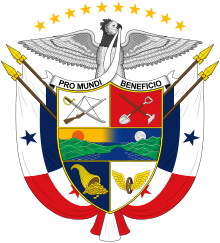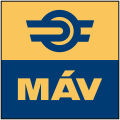|
Winged wheel
 A winged wheel or flying wheel is a symbol used on monuments by the ancient Greeks and Romans and more recently as a heraldic charge. The symbol is mostly formed with one or two wheels and one, two, or three wings—with one wheel and two wings being the most common form. The symbol was historically associated with the ancient Greek god Hermes and Roman god Mercury. In heraldry the symbol has been used to represent transport, speed and progress. It is an international symbol for railway transport, and still forms the basis of many railway company logos.[1] Other modern uses are for sport, cycling and motorbikes. History According to Eugène Goblet d'Alviella, the winged wheel is distinct from the older winged circle symbol which was commonly used in Mesopotamian and Assyrian symbolism.[2] It was used by the ancient Greeks as a symbol of Hermes, the herald of the Gods.[3] According to Goblet d'Alviella, the winged wheel was rare in Greco-Roman antiquity, and when it does appear it is mainly as an indication of a chariot or to symbolise motion:
Use in heraldryThe winged wheel is used in heraldry, though plain wheels (usually cart wheels) and mill wheels are also used.[4] However, the Catherine wheel torture device is the most common wheel symbol used in heraldry.[5] The winged wheel has been shown with one, two or three wings.[6][7][8] When included in heraldic arms they are often emblems of engineering or transport; for example in the arms of the Institution of Municipal Engineers.[9][10] However other meanings have included representing railroads, steam power, tourism, speed and progress.[11][6][12] The device has also been used to represent the Holy Spirit of the Abrahamic religions.[13] In addition to his associations with movement and swiftness Hermes has medical associations (for example through his Caduceus staff). This led to the winged wheel's adoption by the US Army's 2nd Surgical Hospital, where it represented the unit's role in evacuating the wounded.[3] Rail transportSince the 1950s the winged-wheel logo has been increasing stylized away from the classical form. Traces of the winged-wheel or wings can still be found in abstract form in many railway company logos:
Others logos include Romanian State Railways (CFR), Turkish State Railways (combining the winged wheel with a crescent and star), and Trainkos (previously Kosovo State railways). Classic forms:
The winged wheel is used on the collar badge of Polish railway troops, and as the emblem of Russian Railway Troops. A two-winged wheel was the logo of the London General Omnibus Company. When this company was merged into Underground Electric Railways Company of London (UERL) in 1912 the logo was combined with the "disc and bar" of the UERL to form the basis of the modern London Underground roundel.[14] Sport A triple-winged wheel was adopted as the logo of the Cyclists' Touring Club (CTC) in 1886, possibly taking inspiration from earlier logos of the League of American Wheelmen and the Swift Cycling Club. The CTC logo quickly became "cycling’s most famous symbol", featuring on the outside of hotels associated with the CTC (known as "wheel houses") across the United Kingdom.[7] The Detroit Red Wings ice hockey team has used a winged wheel in its logo since 1933, when it adopted its current name. Owner James E. Norris drew inspiration for the logo from the Montreal Amateur Athletic Association, whose athletes wore a similar design.[15] MotorbikesMatchless motorbikes uses a winged wheel logo. The Indianapolis Motor Speedway uses winged wheel logo. Geographical locations A winged wheel symbol has been used in other contexts as various as the coat of arms of Panama and of the city of Edmonton in Canada, the flag of Knoxville, Tennessee, the badge of the Ohio State Highway Patrol, and the logo of Rotary Watches. See alsoReferencesWikimedia Commons has media related to Winged wheels in art.
Information related to Winged wheel |









